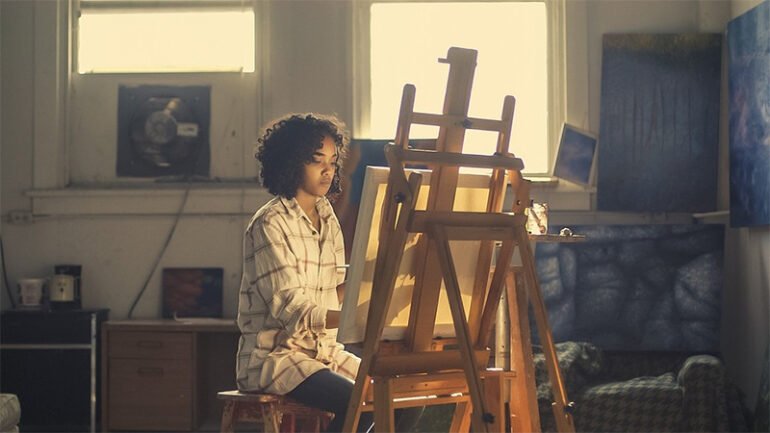One of the best tips for visual artists is to embrace a daily creative practice. Consistency in creating art helps in developing and refining your skills over time. By setting aside dedicated time each day to work on your art, you cultivate discipline and foster continuous improvement. Whether you spend an hour sketching, painting, or experimenting with new techniques, daily practice ensures that you remain engaged with your craft. Furthermore, this regular engagement helps you stay motivated and prevents creative stagnation.

Seek Feedback and Constructive Criticism
Another crucial tip for visual artists is to seek feedback and constructive criticism. Sharing your work with peers, mentors, or art communities can provide valuable insights and perspectives that you might not have considered. Constructive criticism helps you identify strengths and areas for improvement, allowing you to grow as an artist. It’s important to approach feedback with an open mind and use it to enhance your skills and artistic vision. Engaging in critiques not only improves your work but also helps you build connections within the art community.
Experiment with Different Mediums and Techniques
To expand your creative repertoire, it is beneficial to experiment with different mediums and techniques. Trying out new materials, such as watercolors, oils, or digital tools, can lead to exciting discoveries and innovative approaches in your art. For instance, if you primarily work with acrylics, experimenting with watercolor might offer new insights into color blending and texture. Similarly, incorporating digital techniques can add a contemporary edge to your traditional practices. Experimentation encourages growth and helps you find unique ways to express your artistic ideas.
Set Specific Artistic Goals
Setting specific artistic goals is another effective tip for visual artists. Clear and attainable goals provide direction and motivation for your artistic journey. Whether you aim to complete a series of paintings, participate in a certain number of exhibitions, or master a new technique, having well-defined objectives helps you stay focused and measure your progress. Regularly reviewing and adjusting your goals based on your achievements and evolving interests ensures that you continue to challenge yourself and push the boundaries of your creativity.
Build and Maintain a Strong Portfolio
A well-curated portfolio is essential for showcasing your work and advancing your career as a visual artist. It is important to build and maintain a strong portfolio that highlights your best work and demonstrates your versatility and skill. Regularly update your portfolio with recent projects, and ensure that it reflects your artistic style and capabilities. A strong portfolio not only serves as a tool for attracting potential clients or galleries but also helps you track your growth and development as an artist.
Network and Connect with Other Artists
Networking and connecting with other artists is a valuable tip for expanding your opportunities and gaining exposure. Attend art events, join local art organizations, and engage with online art communities to build relationships with fellow artists, curators, and art enthusiasts. Networking can lead to collaborations, exhibitions, and valuable feedback, as well as provide support and inspiration from peers who share your passion for art. Building a network helps you stay informed about industry trends and opens doors to new opportunities in the art world.
Continuously Educate Yourself
Continual education is crucial for staying current and evolving as a visual artist. Attend workshops, take online courses, and read art books to expand your knowledge and skills. Learning about new techniques, art history, and industry trends can provide fresh perspectives and inspire your work. Staying informed and adaptable ensures that your artistic practice remains relevant and innovative. Additionally, ongoing education helps you refine your techniques and explore new creative possibilities, contributing to your overall growth as an artist.
Reflect on Your Artistic Journey
Regularly reflecting on your artistic journey is an important tip for personal and professional growth. Take time to review your past work, assess your progress, and identify areas where you have grown or encountered challenges. Reflecting on your experiences helps you understand your artistic evolution and informs future projects. It also allows you to recognize patterns or themes in your work and adjust your creative approach as needed. Reflection provides valuable insights into your development and helps you stay aligned with your artistic goals.
Conclusion
To thrive as a visual artist, incorporating these tips into your practice can significantly enhance your creative and professional growth. Embrace a daily creative routine, seek feedback, and experiment with new techniques to continuously refine your skills. Set specific goals, build a strong portfolio, and network with other artists to expand your opportunities. Additionally, prioritize ongoing education and reflect on your artistic journey to stay motivated and informed. By applying these strategies, you can elevate your artistry and make a meaningful impact in the art world.




